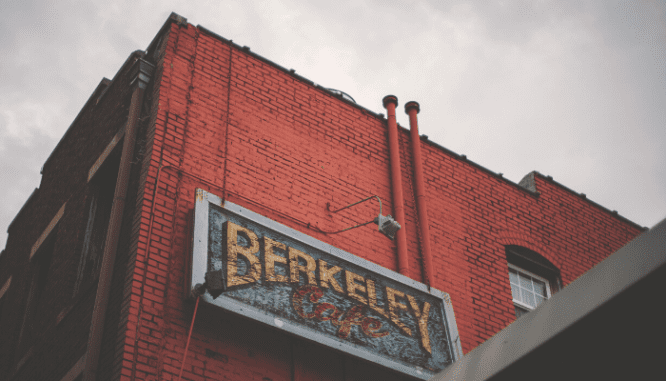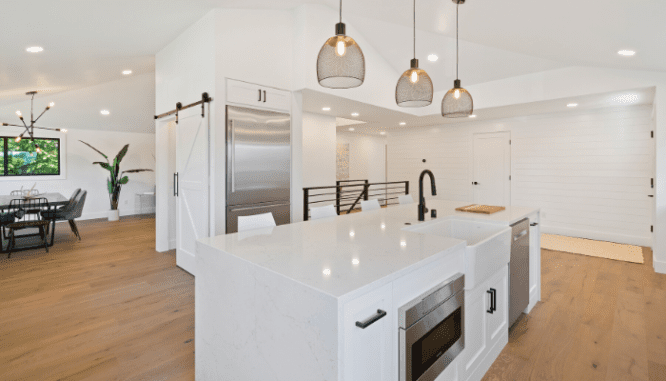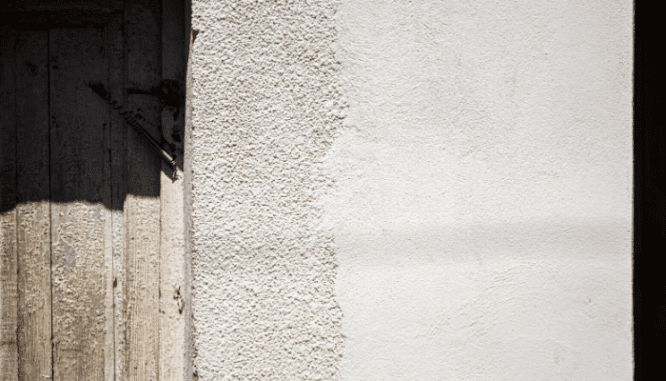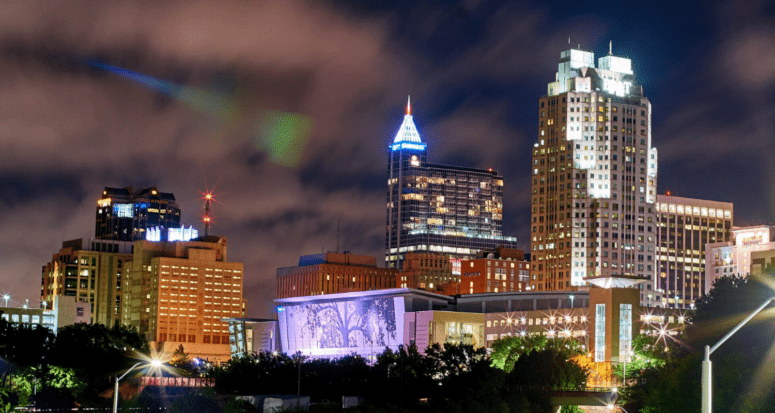Put Down Roots in the City of Oaks: How to Buy a House in Raleigh
- Published on
- 6-7 min read
-
 Mary Clark Navarro Contributing AuthorClose
Mary Clark Navarro Contributing AuthorClose Mary Clark Navarro Contributing Author
Mary Clark Navarro Contributing AuthorMary Clark is a copywriter and marketer who loves all things real estate, tech, and business. When she's not writing or managing online campaigns, you can find her on horseback or drinking copious amounts of Costa Rican coffee.
With its green, rolling hills, ever-expanding skyline, and easy access to the beach and mountains, it’s no wonder Raleigh, North Carolina, has a net migration of 86 new residents each week.
Whether you’re a Raleigh native or newbie, you’ve probably heard the real estate market in the City of Oaks is just as hot as the city’s summers. Named the 10th best real estate market in the country in 2019, Raleigh brings in new residents and keeps long-time citizens happy with its tech hub (think Cisco, IBM, and RedHat), research centers (Research Triangle Park, anyone?), affordable cost of living, and mild winters.
But with so many new residents moving to Raleigh every day — and so many reasons to stay — the demand for homes is high. Well-priced properties don’t stay on the market for long.
To help make the homebuying process in Raleigh as stress-free as possible, we’ve interviewed local real estate experts and scoured market reports. You’ll find tips on how to buy a house in Raleigh that checks every box on your list, from price to style to location.

Setting your home-buying budget in Raleigh
As of November 2019, the median sales price in Wake County was $324,585. Compared with the median sales price of existing homes in the United States ($271,300), Raleigh homes are nearly 18% more expensive than the national average.
For homeowners shopping in the $350,000-and-under budget, getting a deal isn’t typically a matter of closing a sale below listing price. “We tell people that getting a deal in our market is getting your offer accepted on a house in those lower price points,” says Jordan Clark, a first-time homebuyer specialist in Raleigh, North Carolina, who has successfully overseen 450 transactions.
Multiple offers are common for homes at this price point, especially if they come with a great yard, hardwood floors, stainless steel appliances, and neutral paint colors. However, you’ll quickly reap the benefits of buying in a market with strong appreciation rates.
In 2019, Clark saw new construction properties with incentives offered for the first time since 2013, including closing costs and free upgrades — an indication that this segment of the market may be settling.
The median rent for a two-bedroom apartment in Raleigh is less than the national average of $1,855, coming in at $1,159 as of June 2019. The rental market is also experiencing strong growth, increasing 3.6% from 2018 to 2019.
While how much house you can afford is based on a number of personal factors, it’s relatively safe to say the monthly mortgage payment of an average-priced house in Raleigh (with taxes and insurance included) will exceed that $1,159 figure. For a better idea of your house budget, crunch the numbers with this affordability calculator.
What about everyone’s favorite topic: taxes? The national average spent on annual property taxes is $2,279. Let’s take a look at how Wake County compares.
The Wake County property tax rate is 0.7207, and the City of Raleigh rate is 0.4382, for a combined rate of 1.1589 as of January 2020. The 2020 recycling fee is $20. These rates are applied to every $100 of assessed property value.
If your home is located in the City of Raleigh and has an assessed value of $325,000, you’ll pay an estimated $3,786.43 in annual property taxes.
Properties in fire districts are subject to an additional tax rate of 0.096. There are also designated special district rates to be mindful of, particularly for homes downtown.
Getting to know Raleigh
As the second-largest city in North Carolina, Raleigh offers many of the perks found in big-city living while remaining easy to navigate and welcoming. You can make it from one corner of the city to another in about 45 minutes. The average commute time is just 23 minutes.
Raleigh is one of three cities in the Triangle of North Carolina, alongside Durham and Chapel Hill. This area is known for its major research universities, with North Carolina State University in Raleigh, Duke University in Durham, and the University of North Carolina at Chapel Hill. The Triangle boasts a healthy job market with Raleigh’s metro area coming in at No. 6 in the United States as of 2019.
Within Raleigh, there are plenty of communities to suit any buyer, from empty-nesters looking for walkability and entertainment to families in search of great schools and green spaces. Here are some things to keep in mind as you refine your list of target neighborhoods.
Walkability and easy access to attractions
Land prices are high in Raleigh proper, so you’ll mostly find new construction and price points in the $400,000s and $500,000s. Downtown Raleigh is popular with young professionals as well as empty nesters who want to be as close to the city’s entertainment and dining options as possible.
Speaking of options, there’s no shortage of things to do in Raleigh proper; Highlights include the Raleigh Beer Garden, Morgan Street Food Hall, Videri Chocolate Factory, and the North Carolina Museum of Art.
Just east of downtown Raleigh is Oakwood. This neighborhood features newly renovated and new construction houses with smaller lots. You’ll also find historic homes in Victorian and bungalow styles. Lined with oak trees, Oakwood feels a bit like an oasis, insulated from the noisiness of downtown with easy access to the area’s best attractions. With a walkability score of 62, Oakwood is the most walkable neighborhood in Raleigh.
For a mid-town feel, head to North Hills. Just a few miles away from downtown Raleigh, North Hills brings its own charm with the Midtown Beach Music Series, World of Beer taproom, and Crabtree Valley Mall. You’ll also find office towers for SunTrust, Advance AutoParts, Bank of America, Plexus Capital, and more.
Easy commute and family-friendly communities
The suburb of Cary straddles both Wake County and the northeastern corner of Chatham County. Many residents in Cary work in the Research Triangle Park thanks to the easy commute along 1-40W.
Despite being a bedroom community, Cary offers lots of recreation and fun for its nearly 160,000 residents. If you love the idea of an easy commute and lots of coffee shops, boutiques, and parks to explore on the weekend, Cary may be your spot.
Brier Creek is also a great option for the comfort of suburbia with easy access to the Research Triangle Park and the Raleigh-Durham International Airport. The community has grown steadily over the last three decades, with a range of apartments, condos, single-family homes, and luxury estates. The Brier Creek Country Club is a dream come true for golfers, with the Arnold Palmer golf course, member tournaments, and learning academy.
For a quieter, small-town feel, head to Apex. This historic community was named Money Magazine’s Best Place to Live in America in 2015. The southwestern Raleigh suburb’s motto is “The Peak of Good Living.” Apex lives up to its motto with plenty of green space, strawberry patches, fresh air, and a quaint main street.
Most Cary, Brier Creek, and Apex homes belong to the Wake County public school district, many of which feature GreatSchools ratings of 9/10 and 10/10. Some Cary homes annexed to Chatham County will belong to the Chatham County school district.

Housing styles in Raleigh
Raleigh residences do share a handful of commonalities. Attic space is typical in most Raleigh single-family homes, as is central air conditioning, though you may come across window units in older homes that have not been renovated.
Basements are uncommon due to North Carolina’s clay soil, which doesn’t allow for effective drainage.
Raleigh has a range of architectural styles, including cozy bungalows, historic Victorians, or luxury properties with acreage.
Bungalows
Bungalows are popular for their efficient floor plans and charming appearance. They’re usually single-level, though you may also find split-level bungalows. Bungalows are recognizable for their overhanging eaves, which are supported by beams and rafters. They typically have a large front porch and centrally located living room.
Raleigh bungalows can be found downtown, and in Five Points, Cameron Village, Oakwood, and Boylan Heights.
Victorian
It’s hard to find a home with more detail than a Victorian. The Victorian style is known for turrets, towers, tall windows, and multiple stories.
If you’re looking for a Victorian, head to Raleigh’s historic district downtown and check out the South Park, Glenwood-Brooklyn, and Oakwood neighborhoods. Raleigh residents are proud of their historic districts, and restoration is often part of the homeowner maintenance for these properties.
Townhomes and condos
With Raleigh’s hot real estate market, it’s no surprise that builders are keen to build up and maximize space. Townhomes and condos are typically found in downtown and midtown neighborhoods, where walkability is high.
If you love the hustle and bustle of modern living, you’ll find plenty of townhomes to keep you close to all of Raleigh’s greatest attractions in North Hills, Oakwood, and Pace Street Village.
Luxury real estate
Wake County has no shortage of luxury properties. These houses feature expansive acreage, private entrances, contemporary design, and plenty of neighborhood amenities.
Most of these properties can be found in North Raleigh, close to 1-540. Popular communities include Linville, Southern Hill Estates, Pendleton Lake, and Adams Mountain.

What to expect at the inspection stage
Few aspects of the homebuying process scare prospective buyers more than the inspection stage. The question of “what if?” looms large. However, the goal of the inspection process is to give you a comprehensive look into your prospective home and any problems it may have. With that information, you can decide your next steps from an informed perspective.
Local Raleigh home inspector, Dave Park of Advantage Inspection, recommends being present at the inspection.
“A home is one of the largest investments the buyer will make in their lifetime. If you want to be there, you should attend. The inspector should teach you about the home and how to maintain the home’s systems and components, especially if this is your first home.”
Park also recommends paying special attention to the problem areas listed below in order of concern.
Water
Water is one of the elements that can most savagely deteriorate a home. Raleigh is one of the wetter cities in the United States, with an above-average rainfall of around 46 inches each year. Humidity levels reach an average of 77.9% in August.
Your home inspector should carefully examine anything that deals with water or moisture from the interior, exterior, under the property, the attic, plumbing, HVAC, grading, and the roof. Find out where water enters and drains from the house as well as where it is dripping to minimize moisture intrusion.
AC and heating
With an average low temperature of 31 degrees F in January and an average high of 90 degrees F, you’re probably going to want a home with a central HVAC system.
These systems are costly to repair and replace. You’ll want to know the current performance of your system and its age so you can ask for repairs if needed, or budget for future ones. The same goes for other major appliances, including your water heater, stovetop range, dishwasher, and refrigerator.
Roof
How old is the roof on your prospective home, and what is its current condition? Roof replacement is one of the most expensive repairs a homeowner can undertake, costing tens of thousands of dollars. Roofs have a lifespan of 15 to 20 years on average.
If you’re purchasing a home with an older roof, pay special attention to this section of the report so you can budget for repairs and eventual replacement.
Safety
While smoke detectors, carbon monoxide detectors, storm doors, locks, and rails are generally not expensive to repair or install, you should feel comfortable and safe in your new home. You’ll want a report on the working status of these items.
Ancillary
A general home inspection is always a wise choice. Park recommends home buyers in Raleigh also get formal inspections for radon and termites.
For homes built before 1978, consider testing for lead paint as well. A simple chip sample will reveal if lead-based paint is present. From there, you can determine the next steps with the seller and whether encapsulation, or painting over lead paint with modern latex paint, is a solution.

When to buy a house in Raleigh
Wondering when to buy to find the best deal? Our real estate transaction data reveals that average sales prices in January are 6.67% lower than the rest of the year. February is a close second, with prices 5.44% lower.
Prices are typically 4.76% higher in the month of June. However, if you want to live downtown, there’s really no best time of year: Jordan Clark stresses that demand is always high in Raleigh proper.
Find the right buyer’s agent for you in Raleigh
In a market where multiple offers are common and the sales-to-listing-price ratio is 99%, a top buyer’s agent can help you navigate the market with ease. Compared to the average real estate agent, these top agents help their clients save an average of $73,804 on their home purchase.
To find an agent who understands your needs as a buyer and is ready to get you into your dream home in Raleigh, connect with a top agent today.
Header Source Image: (Higgins Spooner / Unsplash)
